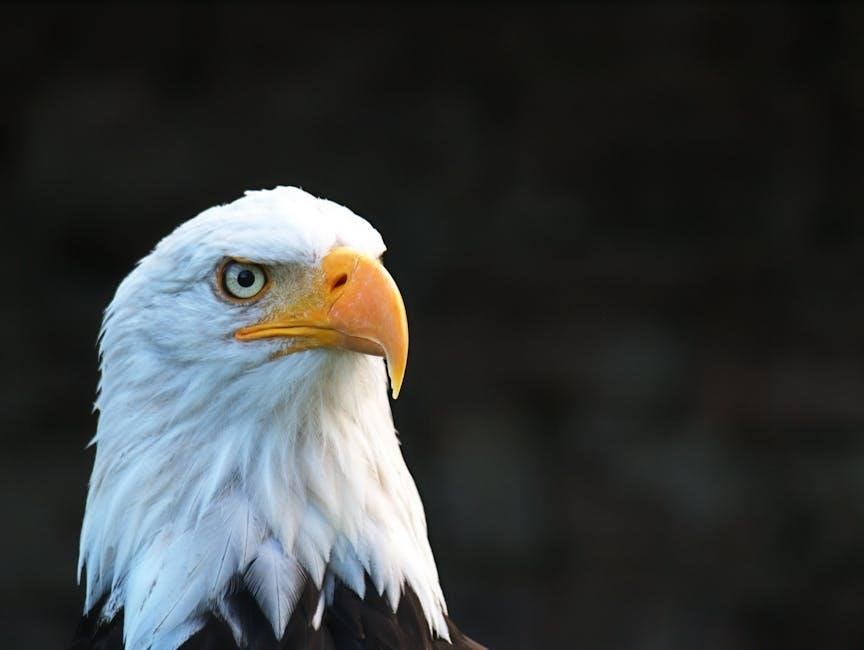
The Hunter Node Manual provides comprehensive guidance for efficient irrigation control. This battery-operated controller offers a user-friendly interface for programming and manual activation. Designed for easy installation and seasonal adjustments, it ensures optimal water management. The manual covers setup, troubleshooting, and maintenance tips for seamless operation.
1.1 Overview of the Hunter Node Irrigation Controller
The Hunter Node Irrigation Controller is a state-of-the-art, battery-operated device designed for efficient water management in residential and small commercial irrigation systems. It is known for its waterproof exterior, making it durable and suitable for outdoor environments. The controller is user-friendly, offering a simple interface for programming and operation. It supports multiple irrigation zones and is compatible with DC latching solenoids, ensuring reliable performance. Its compact design and wireless capabilities make it an ideal choice for modern irrigation needs, providing precise control and minimizing water waste.
1.2 Importance of the Manual for Users
This manual is essential for understanding and utilizing the Hunter Node Irrigation Controller effectively. It provides detailed instructions for installation, programming, and troubleshooting, ensuring users can optimize water usage and system performance. The guide helps users navigate features, customize settings, and maintain the controller properly. By following the manual, users can avoid common mistakes, extend the product’s lifespan, and ensure efficient irrigation. It serves as a comprehensive resource for both new and experienced users, offering clear steps to achieve optimal results and troubleshoot issues promptly. Regular reference to the manual ensures seamless operation and maximizes the controller’s potential.

Key Features of the Hunter Node Controller
The Hunter Node Controller offers a battery-operated, waterproof design with multi-station support and flexible programming options, ensuring durability and efficient irrigation management for various landscapes.

2.1 Battery-Operated Design and Waterproof Exterior
The Hunter Node Controller features a battery-operated design, eliminating the need for AC power and reducing wiring complexity. Its waterproof exterior ensures durability in outdoor environments, resisting moisture and corrosion. The controller operates on a replaceable battery with a lifespan of up to two years, depending on usage. This design allows for easy installation in remote locations while maintaining reliable performance. The waterproof casing protects internal components, ensuring consistent operation in harsh weather conditions. This combination of portability and durability makes the Hunter Node ideal for versatile irrigation systems.
2.2 Multi-Station Models (NODE-100, NODE-200, NODE-400, NODE-600)
The Hunter Node Controller is available in four multi-station models: NODE-100, NODE-200, NODE-400, and NODE-600. These models support 10, 20, 40, and 60 stations, respectively, catering to various irrigation system sizes. Each model shares the same user-friendly interface and programming features, ensuring consistency across the product line. Whether managing a small residential landscape or a large commercial property, the Hunter Node offers a scalable solution to meet specific irrigation needs. This flexibility allows users to choose the right model based on their system’s requirements.
2.3 Standard Hunter Controller Programming with 3 Programs and 4 Start Times
The Hunter Node Controller features standard programming with up to 3 independent programs and 4 start times per program. This allows users to customize watering schedules for different zones or plant types; Each program can be set with unique run times, frequencies, and start times, ensuring efficient water distribution. The flexibility of multiple programs and start times makes it ideal for managing complex irrigation systems with varying requirements. This feature enhances water efficiency and simplifies maintenance for both residential and commercial landscapes.

Installation Guide
The Hunter Node Controller installation involves mounting the unit, connecting solenoids, and securing wires. Ensure proper placement and connections for reliable operation. Follow step-by-step instructions carefully.
3.1 Mounting the Hunter Node to a Solenoid
Mounting the Hunter Node to a solenoid ensures proper operation. First, select a suitable location for the solenoid, ensuring accessibility and protection from harsh weather. Remove the battery from the Node to prevent accidental activation during installation. Use the provided screws to secure the Node to the solenoid, aligning the mounting holes carefully; Ensure the connection between the Node and solenoid is tight to maintain reliable communication. Double-check all wires for correct polarity and secure them firmly. Finally, test the system to confirm proper activation of the solenoid. Always refer to the diagrams provided in the manual for precise mounting instructions.
3.2 Connecting DC Latching Solenoids (P/N 458200)
To connect DC latching solenoids (P/N 458200) to the Hunter Node, ensure the solenoid is compatible with the controller’s wiring configuration. Locate the two wires on the solenoid: one for the positive terminal and one for the negative. Connect the positive wire to the Node’s designated output terminal and the negative wire to the common terminal. Secure the connections tightly to prevent loose wiring. Ensure proper polarity to avoid damage to the solenoid or controller. Refer to the manual’s wiring diagram for specific instructions. Always test the connection by activating the station manually.
3.3 Attaching Wires and Ensuring Proper Connections
When attaching wires to the Hunter Node, ensure all connections are secure and properly insulated. Strip the ends of the wires to expose the conductive material, then insert them into the appropriate terminals. Tighten the screws firmly to prevent loose connections. Double-check the wiring diagram to confirm correct terminal assignments. Avoid over-tightening, which could damage the terminals. For added protection, use waterproof connectors to shield the connections from moisture. Finally, test the system by manually activating each station to ensure proper functionality. This step ensures reliable operation and longevity of the controller.

Programming the Hunter Node Controller
Program the Hunter Node Controller using the button interface to set schedules, start times, and customize irrigation cycles for efficient water management and system control.
4.1 Basic Programming Steps Using the Button Interface
Start by powering on the controller and navigating through the menu using the intuitive button interface. Select the desired program and choose the station or zone you wish to configure. Set the irrigation duration, start time, and frequency according to your needs. Use the arrow buttons to adjust values and confirm settings with the center button. Repeat for additional programs and stations, ensuring all details are accurately entered. Save your configuration to apply the settings. Refer to the manual for detailed step-by-step guidance to avoid errors during setup.
4.2 Setting Up Manual Activation for Override Control
To enable manual activation, press and hold the center button until the display shows “Manual Mode.” Use the arrow buttons to select the desired station or zone. Choose the run time by pressing the plus (+) or minus (-) buttons. Confirm your selection by pressing the center button. The controller will activate the selected station manually for the specified duration. This feature allows temporary override of automatic settings without altering the programmed schedule. Ensure the system returns to auto mode after manual activation to maintain regular irrigation routines.
4.3 Understanding Seasonal Adjustments and Advanced Features
Seasonal adjustments allow users to modify irrigation schedules based on changing weather conditions. Use the button interface to adjust run times or frequencies globally. Advanced features include water budgeting, which scales irrigation by a percentage, and sensor integration for rain or soil moisture detection. These options optimize water usage and system efficiency. For precise control, utilize the master valve feature (available on NODE-200, NODE-400, and NODE-600 models) to regulate water flow. Regularly updating schedules ensures the system adapts to seasonal demands, promoting water conservation and plant health. Compatibility with Hunter sensors enhances customization and automation capabilities.

Manual Activation and Override Options
Manual activation allows immediate control of irrigation cycles, while override options temporarily suspend or adjust scheduled programs. These features provide flexibility for unexpected conditions or maintenance needs.
5.1 Activating a Program Manually
Manual activation enables immediate irrigation control. Press and hold the button to access manual mode. Select the desired station using the navigation buttons. Set the runtime with the plus or minus keys. Confirm to start the cycle. The controller will activate the selected station, overriding the schedule temporarily. Use this feature for quick watering adjustments or testing. The LED indicator will flash during activation, ensuring visual confirmation of the process. This function is ideal for maintenance checks or addressing unexpected watering needs without altering the programmed schedule.
5.2 Overriding Automatic Settings Temporarily
Temporary overrides allow users to pause or skip irrigation cycles. Press and hold the button until the LED flashes rapidly. Use the navigation keys to select the station or program to override. The controller will bypass the scheduled cycle for the selected station only. This feature is useful for unexpected conditions like rain or maintenance. The override remains active until the next scheduled cycle or manual reset. Ensure the LED stops flashing to confirm the override is set. This function provides flexibility without altering the main programming.

Solenoid Requirements and Compatibility
The Hunter Node requires DC latching solenoids (P/N 458200) for compatibility. Correct installation is crucial for proper functionality and to prevent issues. This ensures reliability.
6.1 DC Latching Solenoids vs. AC Solenoids
DC latching solenoids are specifically designed for the Hunter Node, requiring minimal power and maintaining their state without continuous power. Unlike AC solenoids, which are typically used in systems with a constant power supply, DC solenoids are more energy-efficient and suitable for battery-operated controllers. AC solenoids are not compatible with the Hunter Node due to their higher power consumption and operational requirements. Using DC latching solenoids ensures optimal performance, longevity, and reliability in irrigation systems controlled by the Hunter Node.
6.2 Proper Installation of DC Latching Solenoids
Proper installation of DC latching solenoids involves connecting the wires correctly to the Hunter Node terminals. Ensure the solenoid is securely mounted and aligned with the valve. Use the provided screws to attach the solenoid, avoiding over-tightening. Verify polarity by matching the wires to the correct terminals. Keep the area dry to prevent corrosion. Test the solenoid operation after installation to ensure proper activation. Follow the manufacturer’s guidelines for torque specifications and connection sequences; Proper installation ensures reliable operation and extends the lifespan of the solenoid and controller.

Troubleshooting Common Issues
Troubleshooting involves identifying and resolving operational issues with the Hunter Node. Common problems include display malfunctions, wireless connectivity issues, or unexpected valve activations. Always check wiring connections, battery levels, and program settings first. For display issues, restart the controller or replace the battery if necessary. Wireless problems may require re-pairing devices or relocating the controller. Valve issues often stem from incorrect programming or sensor interference. Ensure all connections are secure and consult the manual for advanced solutions.
7.1 Diagnosing Solenoid and Wiring Problems
Diagnosing solenoid and wiring issues is crucial for maintaining proper irrigation functionality. Start by inspecting all wiring connections for damage, corrosion, or loose ends. Use a multimeter to test voltage at the solenoid terminals. If the solenoid fails to activate, check for faulty wiring or a malfunctioning solenoid coil. Ensure all connections are secure and free from debris. Test each solenoid individually to isolate the problem. If issues persist, consult the manual or replace the solenoid. Regular maintenance and inspections can prevent such problems and ensure reliable system operation.
7.2 Replacing the Battery and Maintaining Battery Life
To ensure optimal performance, replace the battery when the low-battery indicator appears. Turn off the controller before replacing the battery. Use a CR2032 lithium battery for long life. Avoid mixing old and new batteries. Store the controller in a cool, dry place during off-seasons to preserve battery life. Check battery levels regularly to prevent unexpected shutdowns. Proper maintenance extends battery lifespan and ensures reliable irrigation control. Always follow the manual’s guidelines for battery replacement and care to maintain system efficiency.
7.3 Addressing Corrosion and Connection Issues
Regularly inspect wires and connections for signs of corrosion. Clean any corroded areas with a soft brush or fine sandpaper. Apply a corrosion-inhibiting spray to protect metal surfaces. Ensure all wire connections are secure and tightly fastened. If corrosion is severe, replace the affected wires or components. Use dielectric grease on connections to prevent moisture ingress. Store the controller in a dry environment to minimize corrosion risks. Addressing these issues promptly ensures reliable operation and extends the lifespan of your Hunter Node controller.

Advanced Features and Customization
Explore advanced customization options for tailored irrigation control. Utilize programmable settings, sensor integration, and master valve operation to optimize water usage and system performance efficiently.
8.1 Master Valve Operation (NODE-200, NODE-400, NODE-600)
The master valve operation in NODE-200, NODE-400, and NODE-600 models provides centralized control over the main water supply, enhancing irrigation management. This feature allows for efficient water distribution by directing flow to specific zones. It integrates seamlessly with the controller, enabling simultaneous activation of multiple stations. Ideal for large-scale systems, the master valve enhances water conservation and system protection during maintenance or repairs, ensuring optimal performance and reliability. It also allows for easier scheduling and customization of irrigation cycles, improving overall system efficiency.
8.2 Sensor Compatibility and Integration
The Hunter Node controller supports integration with various sensors, enhancing irrigation efficiency. Compatible sensors include rain, soil moisture, and temperature sensors, which provide real-time data for automated adjustments. This integration allows the controller to optimize watering schedules based on environmental conditions, reducing water waste. Sensors can be connected directly or wirelessly, depending on the model, ensuring seamless communication. This advanced feature enables smarter irrigation decisions, promoting water conservation and system efficiency. Proper sensor setup and calibration are essential for accurate data and reliable operation.
Maintenance and Care
Regular cleaning and inspections ensure optimal performance. Check for software updates and maintain proper connections to prevent corrosion. Replace batteries as needed for reliable operation.
9.1 Cleaning the Controller and Solenoids
Regularly clean the controller and solenoids to ensure proper function. Use a soft, dry cloth to wipe down the controller’s exterior and internal components. Avoid harsh chemicals or abrasive materials that may damage surfaces. For solenoids, gently remove dirt or debris with compressed air or a cotton swab. Ensure all connections are free from corrosion or residue. Cleaning promotes reliable operation and extends the lifespan of the device. Always disconnect power before cleaning to prevent damage or electrical hazards.
9.2 Checking for Software Updates
Regularly check for software updates to ensure your Hunter Node controller operates with the latest features and improvements. Updates may enhance functionality, fix issues, or improve compatibility. To check for updates, access the controller through the Hunter app or directly via the control panel; Follow the on-screen instructions to download and install any available updates. Always complete the update process without interrupting the device. Updated software ensures optimal performance and security for your irrigation system. Refer to the app or user interface for detailed guidance on the update process.
Technical Specifications

Technical specifications include battery type, wireless communication range, and operating temperature. These details ensure compatibility and performance in various environmental conditions.
10.1 Battery Requirements and Lifespan
The Hunter Node controller requires a 9V alkaline battery, ensuring reliable operation. Battery lifespan typically ranges from 2 to 5 years, depending on usage and environmental conditions. Factors like frequency of programming changes, manual activations, and wireless communication affect battery life. Proper installation and avoiding extreme temperatures help maximize longevity. Regular checks and replacements are recommended to prevent unexpected interruptions. Always use high-quality batteries to maintain performance and durability.
10.2 Waterproofing and Durability Standards
The Hunter Node controller is designed with a waterproof exterior, meeting IP68 standards for dust and water resistance. Its durable construction withstands harsh outdoor conditions, including extreme temperatures and humidity. The controller’s casing is made from high-quality, UV-resistant plastics, ensuring longevity. Proper sealing of ports and connectors maintains waterproofing. Regular cleaning and inspection of seals are recommended to preserve durability. This robust design ensures reliable performance in outdoor environments, making it suitable for long-term use in irrigation systems.
The Hunter Node manual provides comprehensive guidance for efficient irrigation control. Its features and durability ensure optimal performance, making it a reliable choice for outdoor irrigation systems.
11.1 Summary of Key Points
The Hunter Node manual is a comprehensive guide to installing, programming, and maintaining the controller. It highlights the device’s battery-operated, waterproof design and compatibility with DC latching solenoids. Key features include multi-station models, standard programming options, and advanced customization. The manual also covers troubleshooting, maintenance, and technical specifications, ensuring optimal performance. By following the guidelines, users can efficiently manage irrigation systems, making the Hunter Node a reliable and efficient solution for outdoor watering needs.
11.2 Final Tips for Optimal Use
For optimal use, ensure proper installation and regular maintenance of the Hunter Node. Always check connections and power sources before operation. Program schedules according to plant needs and adjust seasonally. Use manual override for quick adjustments. Keep the controller clean and dry to prevent corrosion. Replace batteries as recommended to maintain performance. Utilize advanced features like sensor integration for smarter irrigation. Regularly review and update programs to adapt to changing conditions, ensuring efficient water use and system longevity.